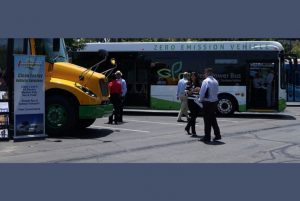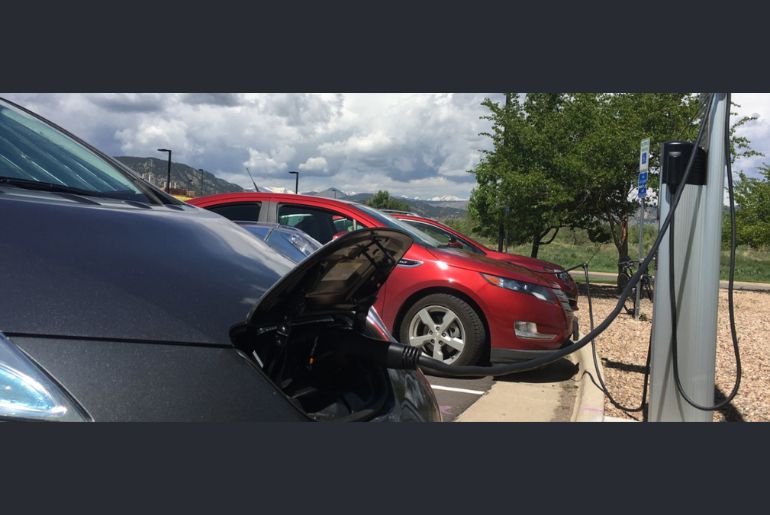Colleges need to upgrade their mobility networks in addition to switching to entirely clean, renewable energy sources including renewable power and fossil fuel-free heating and cooling. Colleges and universities may now afford electric transportation because to cost reductions and technological advancements. Electric vehicles and clean energy work together harmoniously, and campuses all around the United States are discovering how important they are to the campus’s transition to entirely clean, renewable energy.
Electric transportation is key to a clean energy future
In 2016, transportation became the largest source of greenhouse gas emissions in the United States, surpassing the production of electricity. Reducing the amount of fossil fuels used to transport people to, from, and around college campuses requires the usage of clean energy-powered electric vehicles. Future demand brought on by the widespread usage of electric vehicles on college campuses can be met more than adequately by America’s enormous renewable electricity potential.
Colleges and universities benefit from electrifying transportation
Renewable Energy Integration: Increasing the usage of wind and solar electricity on college campuses is made simpler by the use of electric vehicles.
Quality of Life: Using electric vehicles lowers noise, heat, and exhaust.
Cost: In every state in the union, driving on electricity is less expensive than driving on gas.
Research opportunities: Through the University of Michigan’s ‘Battery Lab’, students can work with professionals in the field and have access to cutting-edge technology.
Colleges and universities are taking on the challenges of electrification
Colleges are in a great position to address the problems associated with electrifying transportation:
Cost: Although battery prices have dropped by 80% in just six years, many consumers still find electric vehicles to be prohibitively pricey up front. In order to cut the initial cost of electric vehicles, which can eventually be covered by lower energy and running costs, universities can combine funding from other sources, including federal and commercial monies.
Charging: Campus shuttles can be charged overnight at a campus garage or even while traveling. Electric vehicle fast-charge stations have been installed on campuses such as the University of Wisconsin-Madison, and Utah State University has been at the forefront of a new ‘charge-as-you-go’ technology. Each bus stop in this system has charging plates that use induction charging to charge the buses from underneath.
University of California, Irvine, is first campus in the U.S. to convert to all-electric bus fleet

In the 2017-2018 academic year, 20 all-electric buses rolled onto the University of California, Irvine (UCI) campus, making it the first campus in the U.S. to completely phase out fossil fuels in its on-campus transportation services. This initiative was voted for and is funded by students, who will pay up to $40 each quarter to student services to cover the bus purchase and operating costs. Individual rides on the shuttle service, the Anteater Express, are free.
Electrifying the bus fleet is part of UCI’s larger Sustainable Transportation program to decrease private vehicle trips around campus. As well as offering a clean energy shuttle service, UCI encourages students, faculty and staff to walk, bike and carpool.
Converting to an all-electric fleet improves air quality, decreases street noise, and helps UCI toward its goal to emit zero greenhouse gases from campus buildings and transportation by 2025. UCI has made the Princeton Review’s Green College Honor Roll for four consecutive years, earning a perfect score on the 2017 list, in recognition of the university’s commitment to clean energy and environmental sustainability. For campus buses that stop frequently on predetermined routes, this is perfect.
Western Michigan University is one of the best U.S. campuses for electric cars
Western Michigan University, which ranked fourth in the country in 2014 for the quantity of on-campus EV charging stations, has established a reputation for being an advocate for electric vehicles.
Fiveteen of the twenty-two EV charging stations on campus are powered by a 50-kilowatt solar array. In addition to storing extra solar energy in the car’s batteries for later use, the panels produce enough solar energy every day to fully charge eleven Chevrolet Volts. Anyone is welcome to use the charging stations at any time for free. The solar-powered charging stations and the acquisition of five electric vehicles and a hybrid-hydraulic truck were made possible by a $700,000 state grant.
Real-time data on solar energy generation and electric vehicle energy consumption is provided by WMU’s solar-powered charging stations, which aid in research. WMU is renowned for its robust electrical engineering department, which provides courses on automotive electrical systems, fuel cells and alternative energy sources, and vehicle design and life cycle performance.
Conclusion
The development of new, more affordable EV options for consumers is speeding up the process of electrifying transportation, but this shift won’t happen overnight. This allows utilities enough time to get ready for the extra strain that EV charging will put on the grid as well as for the advancements in technology that will make EV charging for EVs of all sizes quicker and more effective.

